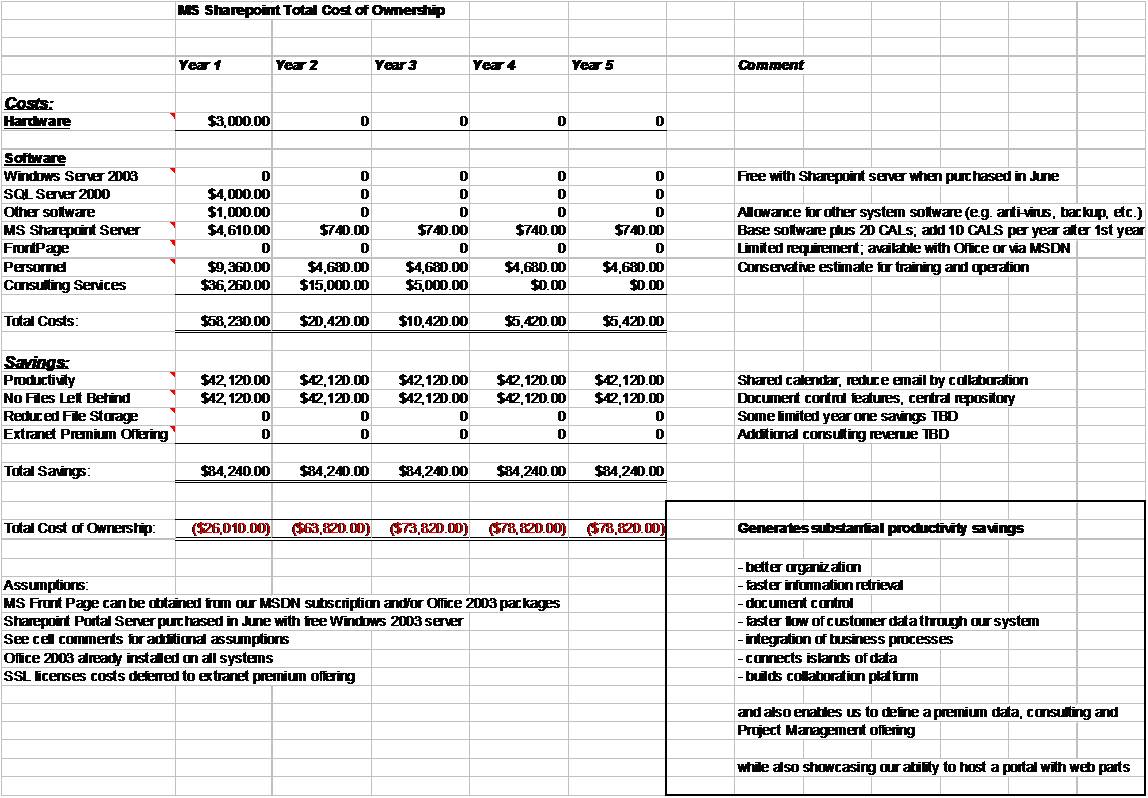
Last week we looked at the BCR -- Benefit-Cost Ratio as a way of evaluating a project. This week I'd like to look at a related technique -- Total Cost of Ownership (TCO). The purpose of many projects is to introduce a new product or service. Often this new product or service has a later ongoing operation. For example, if you have installed Oracle Financials, there is a need to develop the customized software and populate the initial data. Still, once that is complete, there are expenses associated with rolling out the project, paying the maintenance fees, hiring the staff to keep the data current, etc. Similarly, if your project is to construct a housing development, there are ongoing expenses after the homes are built to sell them and get the buyers moved in.
Total Cost of Ownership goes beyond BCR in that it looks at the ongoing expenses associated with a project and lets you know more about what it will cost to keep things going once the project has ended. This is an important component of expenses to examine since the "care and feeding" of a product or project can be significant. Likewise, the benefits may extend out as well. About a year ago I did a TCO analysis for installing and operating MS SharePoint. Here's my analysis so you can follow along:

This analysis starts quite straightforward. A minimal server is needed (for a small site), some software, some consulting, and some fractional personnel to maintain the system. These all represent the hard dollar costs. The hard dollar savings, however, are difficult to identify. There may be some reduced costs on the IT infrastructure, but predicting what they are is difficult, and chances are the savings are minimal. This would especially be true in the first year. Most of the savings come from productivity increases. I identified a list in the lower right-hand corner. The key, of course, is in organization and collaboration. The savings attributable to these is simply an estimate. I also envisioned a premium offering for customers based on a SharePoint implementation, but like the other hard dollar savings, I declined to include a committed estimate.
Note that I ran this analysis out for five years. This gave me some space to show ongoing operational requirements. Things that might have been included here would be increased server capacity if the number of users were to grow or add on software costs if additional packages would be required. The general observation you should make, however, is that the savings outweigh the costs, making this a reasonable investment. The lack of hard dollar savings might see it prioritized after other projects, but unless something better comes along, it's likely to be implemented at some point.
Once again, if you have any questions about the analysis, please leave a comment or drop me an email. Next week, in the third and final part of Look Before the Project, I'll take a look at a Statement of Work and how it can be used to set and manage project expectations at the start.
[This article was originally published 13 July 2007]
Subscribe for Our Project Management Resources, Best Practices, and Tips
Confirm your subscription to receive an email with immediate download access to Project Manager's Resources, a valuable list of books and web sites.
Get the latest tips and updates sent directly to your inbox monthly.
We hate SPAM. We will never sell your information, for any reason.
